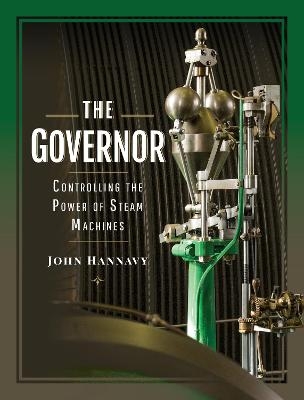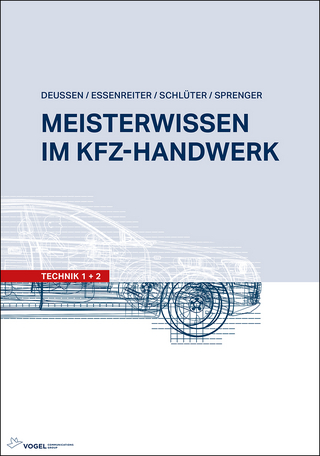
The Governor: Controlling the Power of Steam Machines
Seiten
2021
Pen & Sword Transport (Verlag)
978-1-3990-9088-9 (ISBN)
Pen & Sword Transport (Verlag)
978-1-3990-9088-9 (ISBN)
THE FIRST BOOK TO EXPLORE THE HISTORY OF THE CENTRIFUGAL GOVERNOR -AN EARLY ENGINE MANAGEMENT SYSTEM
ILLUSTRATED WITH OVER 200 PHOTOGRAPHS, ENGRAVINGS, PLANS AND DIAGRAMS
FROM CHRISTIAAN HUYGENS' FIRST ESSAYS ON CENTRIFUGAL FORCE IN 1673, THE BOOK SPANS MORE THAN 250 YEARS OF THE SPINNING BALLS'
Power without control is unusable power, and long after the invention of the steam engine, finding ways of applying that power to tasks where consistency was of paramount importance was the 'Holy Grail' which many steam engineers sought to find. It was the centrifugal governor which brought precision to the application of steam power, and its story can be traced back to 17th century Holland and Christiaan Huygens' development of both the pendulum clock and system controls for windmills, and governors are still at the heart of sophisticated machinery today -albeit electronic rather than mechanical.
Without the centrifugal governor, precise control over the increasingly-complex machinery which has been developed over the past two centuries would not have been possible. It was the first device to give the engineman the control they needed.
As machine speed increased, the governor had to evolve to keep pace with the demands for greater precision.
Over a hundred British patents were applied for in the nineteenth century alone for improvements' in governor design, many of which could be fitted, or retro-fitted, to engines from every large manufacturer.
Some enginemen, on taking up new appointments -their jobs depending on the precision and consistency of their engine's operation -would even request that the governor be replaced with their preferred model.
This book, the first to deal with the subject, tells the story of the evolution of the original spinning-ball' governor from its first appearance to the point where it became a small device entirely enclosed in a housing to keep it clean, and thus hidden from view.
ILLUSTRATED WITH OVER 200 PHOTOGRAPHS, ENGRAVINGS, PLANS AND DIAGRAMS
FROM CHRISTIAAN HUYGENS' FIRST ESSAYS ON CENTRIFUGAL FORCE IN 1673, THE BOOK SPANS MORE THAN 250 YEARS OF THE SPINNING BALLS'
Power without control is unusable power, and long after the invention of the steam engine, finding ways of applying that power to tasks where consistency was of paramount importance was the 'Holy Grail' which many steam engineers sought to find. It was the centrifugal governor which brought precision to the application of steam power, and its story can be traced back to 17th century Holland and Christiaan Huygens' development of both the pendulum clock and system controls for windmills, and governors are still at the heart of sophisticated machinery today -albeit electronic rather than mechanical.
Without the centrifugal governor, precise control over the increasingly-complex machinery which has been developed over the past two centuries would not have been possible. It was the first device to give the engineman the control they needed.
As machine speed increased, the governor had to evolve to keep pace with the demands for greater precision.
Over a hundred British patents were applied for in the nineteenth century alone for improvements' in governor design, many of which could be fitted, or retro-fitted, to engines from every large manufacturer.
Some enginemen, on taking up new appointments -their jobs depending on the precision and consistency of their engine's operation -would even request that the governor be replaced with their preferred model.
This book, the first to deal with the subject, tells the story of the evolution of the original spinning-ball' governor from its first appearance to the point where it became a small device entirely enclosed in a housing to keep it clean, and thus hidden from view.
John Hannavy is a writer and photographer with a passion for engineering history. His work regularly appears in heritage magazines. A retired academic, he has written extensively on railways and other forms of transport, steam-powered machines, the history of photography, and the industrial development of Victorian and Edwardian Britain. He is a Fellow of the Royal Photographic Society, and was Centenary President of the British Institute of Professional Photography, whose Fellowship he also holds. His 2020 book Transporter Bridges -an illustrated history is also published by Pen & Sword.
| Erscheinungsdatum | 31.01.2022 |
|---|---|
| Zusatzinfo | 100 colour integrated |
| Verlagsort | Barnsley |
| Sprache | englisch |
| Maße | 216 x 282 mm |
| Themenwelt | Sachbuch/Ratgeber ► Natur / Technik ► Fahrzeuge / Flugzeuge / Schiffe |
| Technik ► Fahrzeugbau / Schiffbau | |
| Technik ► Maschinenbau | |
| ISBN-10 | 1-3990-9088-7 / 1399090887 |
| ISBN-13 | 978-1-3990-9088-9 / 9781399090889 |
| Zustand | Neuware |
| Haben Sie eine Frage zum Produkt? |
Mehr entdecken
aus dem Bereich
aus dem Bereich
wie wird man Fachkundiger für Arbeiten an Hochvolt-Systemen im …
Buch | Softcover (2023)
Paul Christiani (Verlag)
68,00 €
Technik 1+2
Buch | Hardcover (2020)
Vogel Communications Group GmbH & Co. KG (Verlag)
129,00 €
Buch | Hardcover (2022)
Vogel Communications Group GmbH & Co. KG (Verlag)
79,80 €


